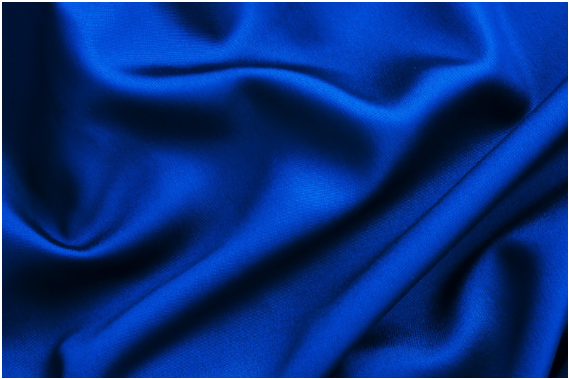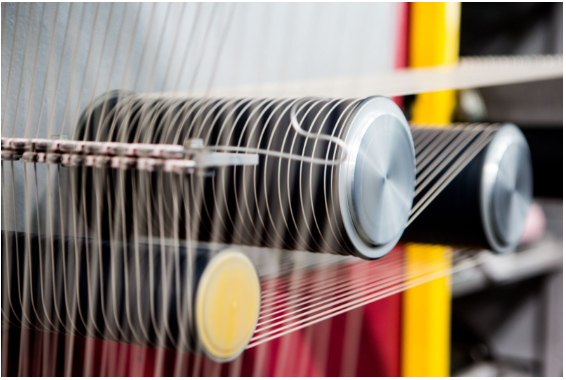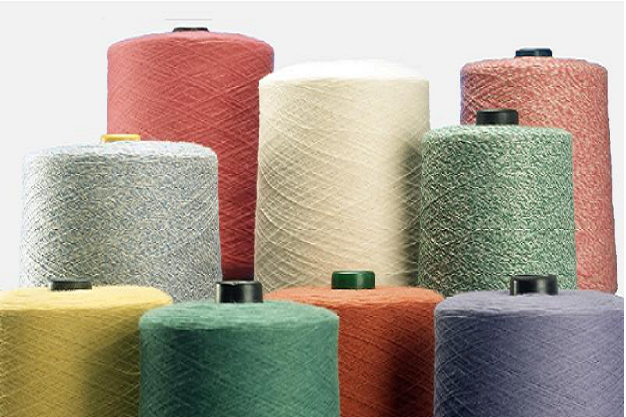Viscose stands out as a versatile and captivating material in the dynamic textile industry and has captured the attention of both industry professionals and fashion enthusiasts. As a regenerated cellulose fiber, viscose offers a unique blend of natural origins and engineered properties, making it a popular choice for a wide range of applications. Two distinct variants have emerged within the viscose fiber family: viscose staple yarn and viscose filament yarn.
Viscose Yarn: Crafting the Fabric of Comfort
Viscose yarn, also known as spun rayon, is a chemical fiber yarn made from viscose staple fibers. These fibers are produced through a meticulous process that begins with the extraction of cellulose from wood pulp or cotton. The cellulose is then chemically treated to form a viscous solution, which is then extruded and spun into short, staple-length fibers. These fibers are then further processed, often blended with other fibers, and ultimately spun into a yarn.
Characteristics of Viscose Staple Yarn
Viscose yarn is renowned for its exceptional softness, drape, and moisture-wicking properties. Its inherent absorbency allows it to effectively transport perspiration away from the skin, making it a popular choice for apparel and home textiles. Additionally, viscose yarn boasts excellent dye-ability, allowing for the creation of vibrant and long-lasting colors.
Viscose Filament Yarn: Your Go-To Luxurious Choice
In contrast to staple-based viscose yarn, viscose filament yarn is a continuous, filament-based fiber. It is produced through a similar process but with a crucial difference: the viscous solution is extruded through a spinneret, forming long, continuous filaments rather than short staple fibers.
Characteristics of Viscose Filament Yarn
Viscose filament yarn boasts a remarkable level of softness, smoothness, and luster, often likened to the natural elegance of silk. Its continuous filament structure lends it superior strength and durability, making it well-suited for high-end textiles and fashion applications. Additionally, viscose filament yarn exhibits excellent dye-ability, allowing for the creation of vibrant and consistent colors.
Viscose Yarn vs. Viscose Filament Yarn: Understanding the Differences
While both viscose yarn and viscose filament yarn share a common cellulose-based origin, several key differences set them apart:
1. Production Process:
Viscose yarn is produced from short, staple-length fibers, while viscose filament yarn is created from continuous, filament-based strands.
2. Fiber Structure:
Viscose yarn is composed of shorter, individual fibers, while viscose filament yarn consists of long, continuous filaments.
3. Strength and Durability:
Viscose filament yarn’s continuous structure enhances its strength and durability, making it ideal for high-stress applications.
4. Appearance and Drape:
Viscose filament yarn boasts a smoother, silkier appearance and enhanced draping capabilities compared to viscose yarn.
5. Applications:
Viscose yarn is more commonly used in apparel and home textiles, while viscose filament yarn is often preferred for high-end fashion and luxury fabrics.
Revolutionizing Viscose: The Emergence of Silque
While viscose has long been a textile staple, AYM Syntex‘s innovative yarns are set to redefine the boundaries of viscose-based fibers. Silque, their revolutionary viscose-based yarn, combines the natural attributes of viscose with advanced engineering to create a fiber that outperforms traditional viscose in several key areas.
Silque: Elevating the Viscose Experience
Silque, AYM Syntex’s proprietary viscose-based yarn, is the result of thorough research and development. By using cutting-edge technology and a deep understanding of fiber science, the company has developed a viscose-based yarn that boasts enhanced strength, superior softness, and exceptional moisture management properties. Silque’s unique formulation and production process ensure that it retains the inherent advantages of viscose while addressing some of its traditional limitations.
Silque’s Key Advantages
- Improved Strength:
Silque’s innovative structure and composition provide superior tensile strength, making it more durable and resistant to wear and tear compared to conventional viscose yarns.
-
Enhanced Softness:
The advanced engineering behind Silque results in a fiber that is exceptionally soft to the touch, delivering a luxurious and comfortable user experience.
-
Exceptional Moisture Management:
Silque’s advanced moisture-wicking capabilities ensure that fabrics made from this yarn effectively transport perspiration away from the skin, promoting a fresh and dry feel.
-
Vibrant Coloration:
Silque’s exceptional dye-ability allows for the creation of vibrant and long-lasting colors, expanding the design possibilities for textile manufacturers.
This way, Silque by AYM Syntex is set to redefine viscose-based fibers, meeting the evolving demands of the textile industry and modern consumers.
Also Read: Key Characteristics of the Polyester Filament Yarn
Conclusion
Viscose, in its yarn and filament forms, has long been a cornerstone of the textile industry, offering a unique blend of natural origins and engineered properties. As the demand for performance and sustainability continues to shape the textile landscape, the future of viscose is one of innovation, diversification, and a steadfast commitment to environmental stewardship.
Through the pioneering efforts of manufacturers like AYM Syntex and their revolutionary offerings like Silque, the potential of viscose-based fibers is being unlocked, redefining the boundaries of what is possible in the world of textiles. As the industry evolves, viscose’s enduring allure and versatility will continue to captivate both professionals and consumers, solidifying its place as a fiber of the future.




